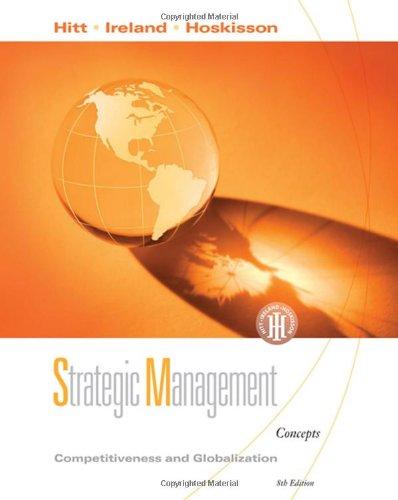It is common to see military analogies and phrasing used to describe strategy topics, particularly in regard
Question:
It is common to see military analogies and phrasing used to describe strategy topics, particularly in regard to competitive dynamics and interfirm rivalry. For example, executives often speak about guerilla marketing, launching preemptive strikes on rivals, or battles for market share. Al Dunlap, a former CEO of Sunbeam, was once known as “Rambo in pinstripes” and even posed for a business magazine photo shoot wearing machine guns.
Military texts are often used to help understand how firms should act in relation to their competitors. Von Clauswitz’s book On War draws on his experience in the Napoleonic Wars. Sun Tzu’s Art of War is a much earlier—circa 500 B.C.E.—and more influential text, however. Sun Tzu was a Chinese general who, according to legend, was hired by the king after a demonstration of training using the king’s concubines.
Part One
Break into teams of 4–6 persons. Each member should select a different chapter of Art of War. Numerous sources on the Internet offer free downloads of the book, including an audiobook version at Project Gutenberg. (http://www.gutenberg.org). After reading your chapter, prepare a bulletpoint summary for your team members on the chapter’s relevance to corporate strategy.
Part Two
Have the team meet and ask each member to explain her/his summary of what was read. Then, answer the following questions:
- Which of Sun Tzu’s ideas offered the most insightful analogies for interfirm rivalry?
- Which of Sun Tzu’s ideas seemed to be the least relevant for understanding competitive dynamics among firms?
- What ideas from Art of War can you apply to an example used earlier in this chapter?
Step by Step Answer:

Strategic Management Competitiveness And Globalization Concepts
ISBN: 9780324581126
8th Edition
Authors: Michael A. Hitt, R. Duane Ireland, Robert E. Hoskisson





